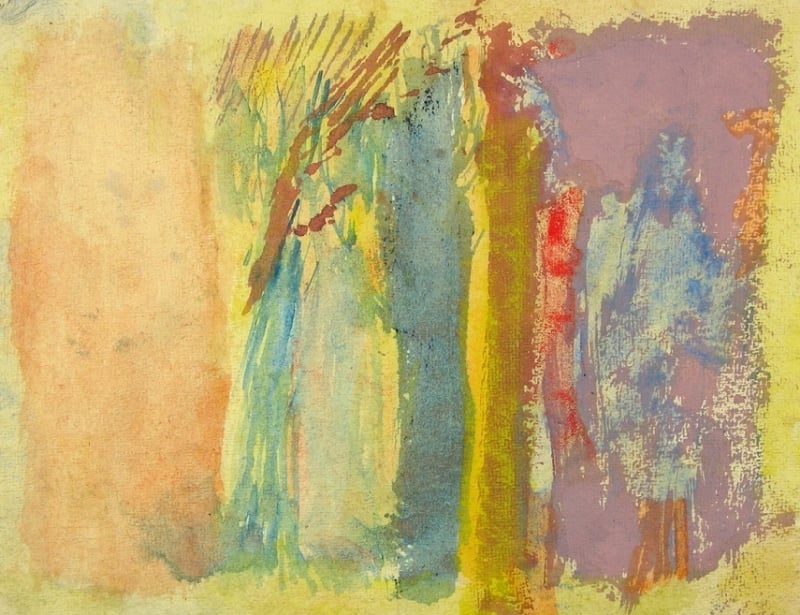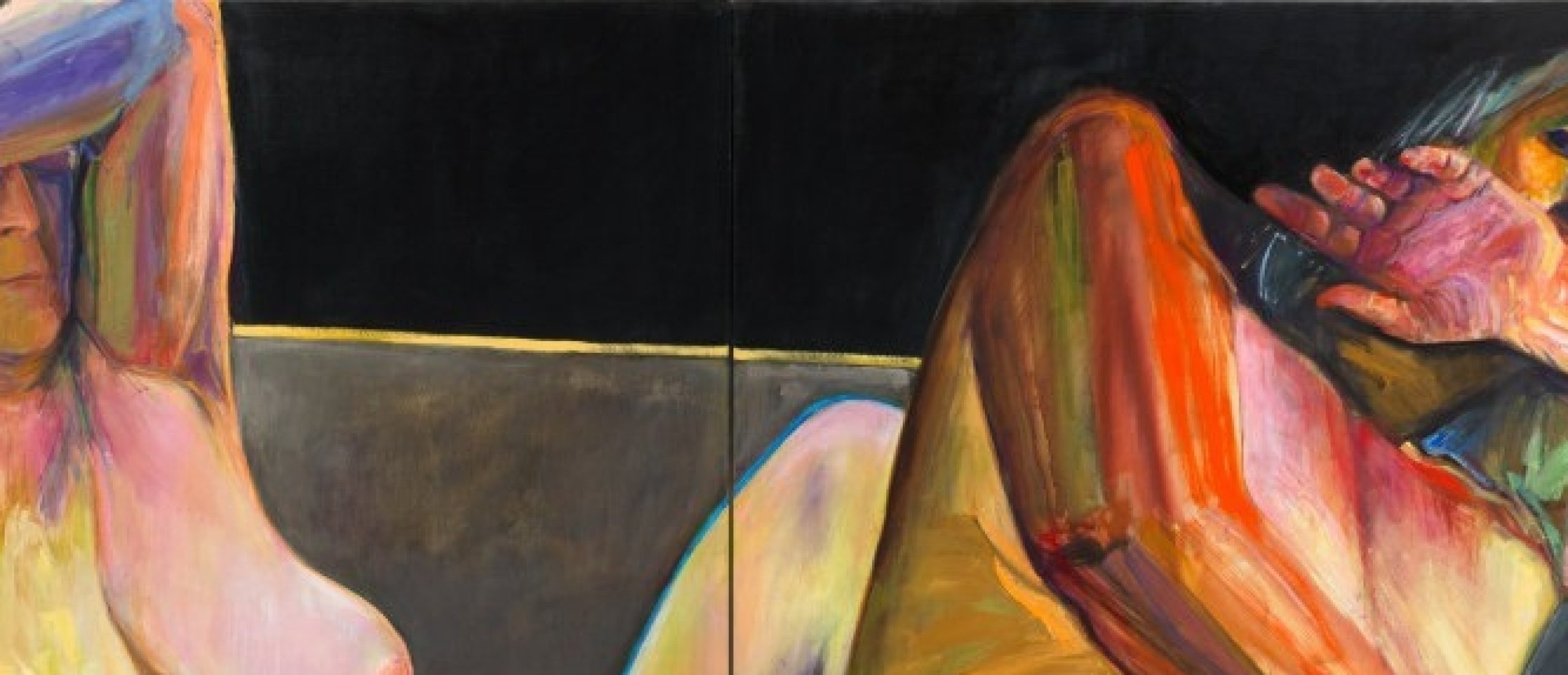
The subject of our current article, American artist and self-taught photographer Saul Leiter (1923-2013), is known as a pioneer of color photography. In the late 1950s, he contributed to many iconic fashion magazines, namely Esquire, Harper's Bazaar, Show, Elle, British Vogue, Queen, and Nova. Leiter's street shots turn urban fussiness into an elegant collage or abstract composition of shapes and colors. His legacy counts for thousands of images, including monochrome and color nudes. Expressively overpainted, the resting females become seductive odalisques.

Fig. 1. Harlem, 1960 (howardgreenberg.com)

Fig. 2. Soames Bantry, Nova, 1960 (yandex.ru)

Fig. 3. Iris Bianchi, Harper’s Bazaar, 1961 (pinterest.com)

Fig. 4. Left: Saul Leiter, Untitled (howardgreenberg.com); right: Kawase Hasui, Snow at Toshogu Shrine, ca. 1930s (tallengestore.com)
Between Religion And Art
Saul Leiter was born in the family of a Talmud scholar. The origin naturally led him to a career in theology. Leiter attended the theological college of Cleveland until he turned 22. Interested in painting since his late teens, he eventually chose another path to god, unconventional yet promising. In 1946, he moved to New York City to become a painter. Shortly after, Leiter met Richard Pousette-Dart, an abstract artist who also experimented with photography. This acquaintance, along with many others, influenced Leiter to create abstract paintings and work with a camera. Two years after the relocation, the artist attempted to color photography sometimes using the expired Kodachrome 35 mm film.

Fig. 5. Abstract painting by Leiter (saulleiterfoundation.org)

Fig. 6. Abstract painting by Leiter (saulleiterfoundation.org)











